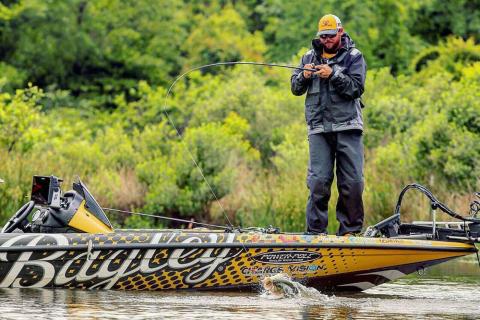Austin Delano | Originally published in GameKeepers: Farming for Wildlife Magazine. To subscribe, click here.
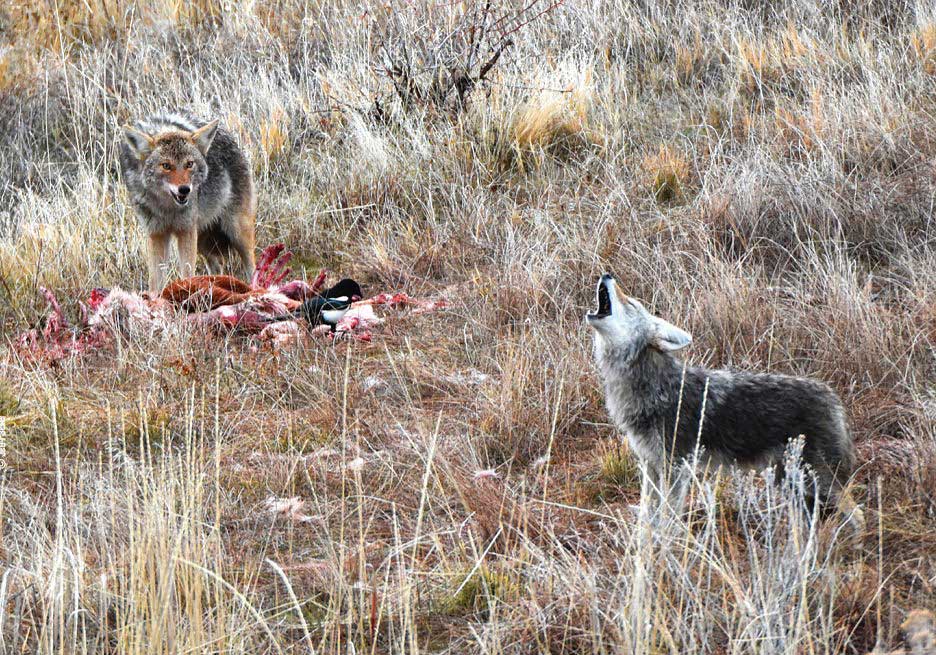
I vividly remember the winter that it happened. It was a cold and very wet December when I discovered this “game of wits” known as “trapping.” The agricultural fields and timber of east-central Arkansas are well known for its abundant waterfowl hunting opportunities, but it also held a seemingly endless supply of critters for a young boy to chase.
I had experienced success early using some live traps I acquired from my dad. I stuck fairly close to our house at first and caught mostly possums, coons, armadillos, and the occasional feral cat. My confidence as a trapper was high but would soon be brought down to reality when I started trying to catch the more difficult fur bearers.
A few weeks later a best friend discovered his dad’s cache of old long spring leg-hold traps. My affinity for catching varmints obviously escalated with the new weapons we had at our disposal. We were also “threatened with our lives” if any of those traps came up missing.
The anticipation of a possible prized beaver, otter, or raccoon was enough to have us getting up before daylight to ride our bikes to check our trap line, which was always in a briar thicket or a ditch full of Arkansas gumbo mud. We never caught much in our water sets, but we always arrived at school muddy and wet with a story to tell of that morning’s adventures.
Fast forward almost 30 years and I still love to trap, even on the mornings when you come home with nothing, but still wet, with muddy clothes and story to tell to anyone that will listen. I believe some people just have it in their DNA to be trappers.
If you think back only 4-5 generations, it’s a good possibility one of your not so distant ancestors trapped for fur to trade or sell. In today’s time of modern conveniences and technology we use to aid our hunt, trapping is my way of feeling connected to the great outdoorsman like Daniel Boone, James Bridger, or Grizzly Adams who made a name and living trapping and trading with Indians and fur buyers. These guys understood the wilderness and all the animals better than anyone.
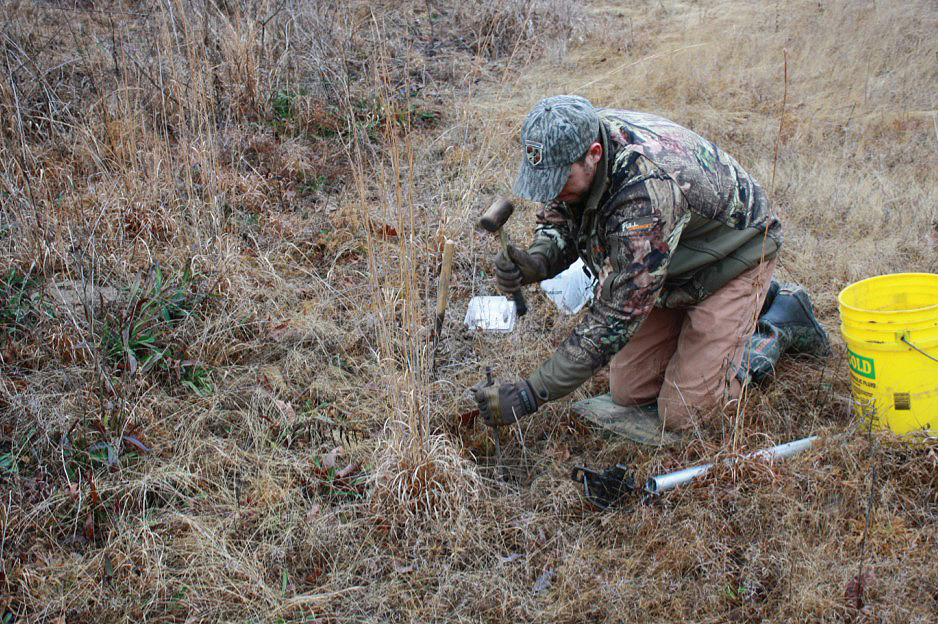
In the times of the early European settlers, the “fur trade” was “savage warfare” at times. Indians, Dutch, European settlers, Spanish explorers all competed fierce ly for land and fur. The fur trade was a major force that shaped the course of American history for 300 years starting in the 1600s. Trapping played a major role in the settlement and evolution of the colonies and the push to expand westward in the U.S. The “appetite” for the untold number of animals killed was mostly dictated by fashion, greed, and a quest for riches.
It could be said the fur trade was the integral part of America’s earliest economy. A quote from a book written by Eric Dolin titled, “Fur, Fortune, and Empire, the Epic History of the Fur Trade in America,” reads, “Over time, it is all too common for people to lose touch with their heritage, as the thrill and immediacy of the present crowds out the echoes and lessons of the past. It would be a shame if that were to happen with respect to the fur trade. It is a seminal part of who we are as a nation, and how we came to be.”
Although my dad claims he didn’t teach me anything about trapping and that I just kind of picked it up on my own, the lessons he taught when we hunted were far more valuable than the intricacies of trapping. Reading sign, how to move quietly, studying animal behavior, are all key skills that help to be consistently successful at trapping. Guys who are really good woodsman tend to take to trapping easily. I still trap a lot as a wildlife management tool, but more than that it’s the competition and thrill of outwitting an animal with senses that are difficult to fool.
Trapping is somewhat of a dying art. Most of the lack of participation can likely be attributed to busy schedules, lack of know-how, and poor fur prices. I have always really enjoyed trapping and found a lot of satisfaction in trying to out-wit predators and other critters.
Most really successful trappers will tell you they don’t carry around a book of secrets on how to catch critters on a consistent basis. What you will find with almost every good trapper is a strong work ethic, very competitive spirit, knowledge on how to adapt to diverse situations, and great attention to detail.
With all the time and effort that we as gamekeepers put into conserving and protecting the game animals we love to hunt, we hate to see predators play a large role in affecting population numbers. Predators play an important role in the food chain and are needed for balance, but left unchecked they can make a significant impact on deer, elk, turkey, and other animals we love to pursue.
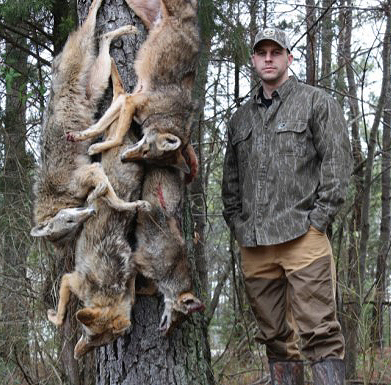
season show marked increases in fawn recruitment and
survival, although there are occasional properties where
improvement is difficult to track.
The re-introduction and protection of wolves in parts of the north is a good example, and they have had a significant impact on large game numbers and are still a growing problem in areas. While the average person may not have to deal with a predator as large as wolves, almost all of us have smaller predators we should try and manage.
With everyone seeing more coyotes while outdoors, they catch the blame for a lot of issues facing game, especially whitetail fawn recruitment. Like it or not the “song dogs” are here to stay along with bobcats, fox, raccoons, etc. You can kill as many as possible on your piece of property and definitely “help the cause” when it comes to protecting game, but there will always be predators around.
The key to predator management having the biggest impact on your hunting is removing the predator at the correct time of year. The argument has been made that you need a few coyotes around to keep the other small predators in check. There is some research that supports this claim. However, no one likes the idea of coyotes playing a significant role in managing their deer herd for them. While coyotes may not have a major impact on the overall deer population of a given county or state, they can definitely effect small pockets and that might be your property.
Small predators and pests are a great place to start when it comes to learning the basics of trapping. Just about every stretch of habitat, whether in the middle of an urban environment or very rural locations, hold some population of raccoons, possums, skunks, armadillos, fox, beavers and the list goes on.
Most of these species are very adaptable and have thrived amongst human intrusion and urban sprawl. I have noticed in some areas the population density of these smaller predators may be even higher the closer you get to increased human population because of a lower number of larger predators who are more wary and would rather be in more rural settings. This doesn’t hold true everywhere, but I have trapped several urban woodlots and thickets that are over abundant with coons, possums, beavers, etc. So as long as its legal and you have permission, there are numerous trapping opportunities without having access to vast expanses of woods or fields.
Nest predator trapping can be very rewarding for the novice trapper or veterans as well. There are many trapping methods that can be used successfully in nest predator removal. Using live traps is one of the easiest and least complicated methods for catching nest predators such as possums, skunks, coons, and armadillos. These live traps or “cage traps” as they are often called, can be placed in any travel routes along creeks, edges of ponds, around wildlife feeders, and numerous other areas where they are sure to roam.
Talk to 10 trappers and you will probably get 10 different answers on what the best bait is. I have seen everything from cat food, honey buns, sardines, and marshmallows used and most of them work well. There are numerous commercial baits available that also work great for these smaller critters. The commercial baits offer a little more bang for your buck, in that many of them have gland scents as well as attractive food derivatives that can be very strong and smelled from great distances to improve trapping success.
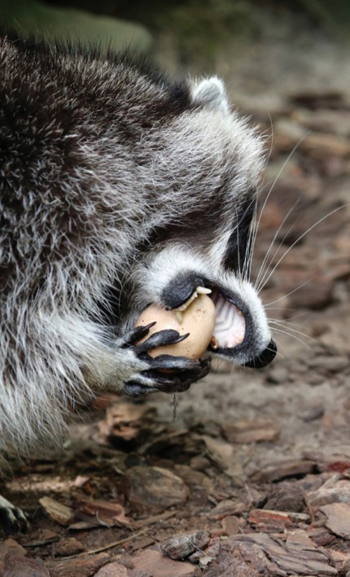
begin learning on and hone your trapping skills.
Most live or cage traps are built very similar with both 1 or 2 door configurations and some form of a pan or plate that trips the door to shut when stepped on or pressed by the critter. Although many nest predators can be caught with the trap just left sitting in the wide open, some care can be taken to cover the trap with some material from its surroundings like dead grass and small sticks to conceal the sight of the wire cage. A small earth stake or even a heavy rock can be used to keep the trap from being rolled and moved once the pest is caught inside.
Another popular and very effective method for raccoon trapping is called a dog-proof trap. There are many variations and brands of dog-proof traps available and most use a push-pull style trigger that works great for coons as well as incidentals like possums, feral cats, and similar pests. These push-pull style dog-proofs are great to use in urban environments where you have a higher probability of catching a family cat, they can then be released with no harm done.
Trappers who are primarily targeting coons or want to decrease incidentals catches will usually use the “pull only” type triggered dog-proof traps. These are great for raccoons because they are one of few animals that have small and dexterous hands that can reach in, grab and pull the bait to trigger the trap. Dog proof traps are probably the most economical way to get a lot of traps out on a piece of property to catch as much fur as possible. They can be set and baited quickly and then anchored with a cable stake and on to the next one.
Leg-hold sets have been used with great success for many years on raccoons and other nest predators. As with anything, it pays to have these sets where the critters already want to be. Creek banks, log crossings, travel corridors in thickets, and pond edges are all places to expect good results. Look for tracks and sign just like you would for big game, it will help you put your sets out where the activity is best. “#1 size traps” are sufficient in all brands for catching and holding most nest predators.
Coyote trapping has received a lot of attention the last few years for several reasons. Although many states have areas where the deer population has exceeded the carrying capacity, there are also many isolated areas where the deer population has been on a steady decline for several years. Studies done on some of these areas show a significant amount of fawn mortality can be directly attributed to coyotes. This can have a major impact on fawn recruitment, especially if combined with a year or two with disease, bad weather, or loss of good fawning habitat, which in turn, starts a downward trend in overall deer density. This has led to many people getting interested in trapping coyotes as a means to bring back their deer herd or prevent it from regressing.
One of the most effective ways to remove coyotes from a property is through an intense trapping program. One thing many people don’t realize is that the fawning season also lines up with when most coyote pups are born. Fawns are not only a favorite meal for coyotes, but they are also eating more this time of year in order to feed litters of pups.
Although trapping seasons vary on a state to state basis, the most effective time to remove coyotes through trapping is immediately before the peak in fawning activity for that piece of property. Removing 70% of coyotes at the peak of fawning season can dramatically increase fawn recruitment rates. Recent studies have shown where recruitment rates were increased 150-215% on land where the majority of coyotes were removed at peak fawning time.
If there was ever a case for “buck to doe ratios” to be kept in check, this may be as important as any of them. Land that is managed for a 1:1 ratio will usually have a fawn drop that will happen all within about a 2 week period. This means all the fawns hit the ground at almost the same time, making it much harder on predators to negatively affect the recruitment rate of that property – in essence, you’re overwhelming them with too many fawns at one time. When buck to doe ratios are more skewed and they are more in the 7:1 range as an example, the fawn drop will be much more spread out and predators like coyotes have a much better chance of negatively impacting your overall fawn survival numbers.
Coyotes and other predators can also suppress an already low number of deer from rebounding from a natural die off or abused doe harvest. A section of a southern state that I grew up hunting was hit pretty hard several years ago by EHD (epizootic hemorrhagic disease). The overall population of deer in this area looked to be down 50-70%. This massive hit to the population, along with a very liberal doe harvest had numbers as low as the area had seen since the 1960’s. Some of these areas still seems to be struggling to rebound to anywhere close to previous numbers, and I believe the low quality fawning habitat, liberal doe harvest rules, and an unchecked coyote population has been keeping the deer in this area suppressed well below carrying capacity. This same scenario has been playing out in several areas where in the past they have had plentiful deer numbers.
Snaring has always been a popular way of catching critters. When using them for coyotes, you should do a lot of scouting to find the areas where you have the highest chance of a catch. These areas can be ditch crossings, trails in high grass or thickets, digs under fences, and pinch points of trails and terrain. Snaring can be advantageous over leg-holds in areas where access by ATV or truck is very limited, simply because you can carry a lot of snare set ups without having a lot of weight.
I have personally had good success snaring around fences where coyotes have a gap they consistently use. I have also caught a lot of coyotes where they dig under long fence lines, this can be especially effective on enclosures that have a large amount of property that coyotes want to hunt and use. These are also areas where you have a very low percentage chance of catching many incidental animals and are very coyote specific.
A 3/32nds size cable with a swivel and cam lock closure is my favorite kind, and 7 foot lengths are ideal for most situations. Earth anchors are a great way to stake snares when snaring on trails, fence posts, but strong saplings also work when available. Ideally snares should be boiled and dyed before using to get the bright shine off the cable. When it comes to using leg-hold, coil spring traps for coyotes and bobcats, there are about as many opinions and techniques as stars in the sky. It’s kind of a trapper’s pride thing that leads us to believe that whatever we did to catch one of these wary predators should be the gold standard everyone should go by.
When talking predator trapping with others, my advice is to stick to what works for you until it quits working and then adjust.
Give the coyote his due, they are very wary, cunning, instinctual, and adaptable to most any environment and situation, but many people think they are too smart and not catchable. Truth is they are very catchable and you just have to learn how to consistently make sets that coyotes can’t resist.
The dirt hole set may well be the most popular and effective set for consistently catching fur. I will explain here in some detail, the following is taking into account you already have your proper supplies and some general trapping knowledge.
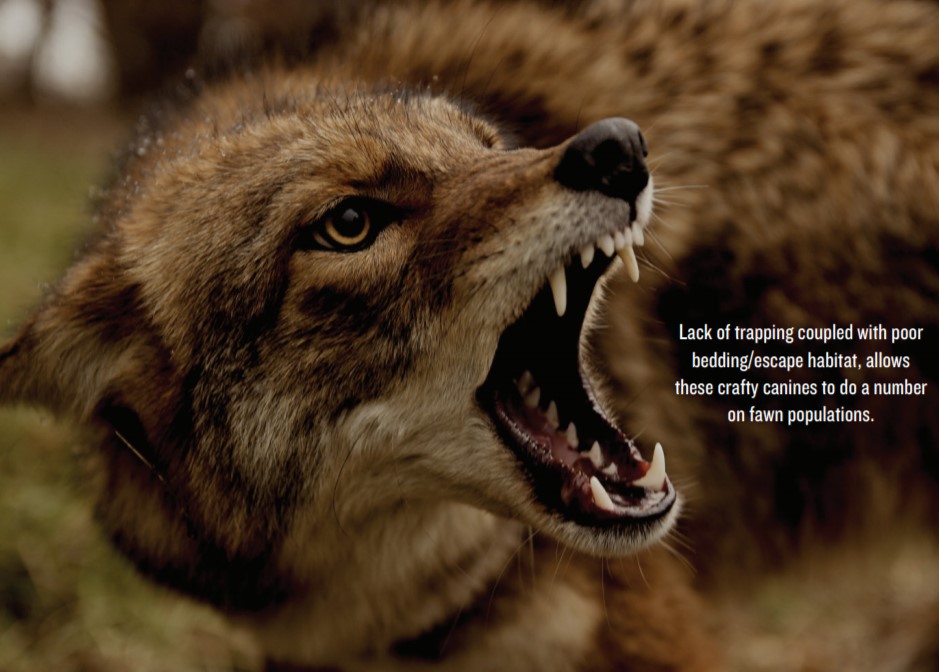
In its simplest form a dirt hole set is nothing more than a hole in the ground that smells like it has a “coyote treasure” buried in it. Coyotes are thieves and I try to create my dirt hole sets as if another coyote killed something and tried to bury the remains or create a cache for the kill. My ideal dirt hole set uses 3 different main scents; a bait, a lure, and urine.
After finding an area I’m likely to catch traveling coyotes in places like roads and intersections, ditch crossing in fields, or gaps in fences. Look for something that has a good backing, like a clump of grass that sticks out or piece of rotten log, really anything that will encourage the coyote to work the set from the front where your trap is bedded. Once you have your backing, dig your trap bed about 8 inches in front of the backing.
Your trap should be bedded as solid as possible so there is no rocking or wobbling motion if you press on either side of the hinges or jaws. Once your trap is properly bedded and covered, you can put in your dirt hole. I like to wait to make this my last step to cut down on the chance of getting any smell of bait or lure on the trap itself. You want all of the scent to come directly from the hole. I usually dig mine in about 2 inches to the right and 6-8 inches in front of my trap pan which should put it just in front of and to the right or left of center of your backing. I like to use sheep’s wool to put my bait on and push it to the bottom of the 8-10 inch deep hole with a small stick…leave the stick in the hole.
I like to use a piece of pipe or an auger to make a good round dirt hole. After my bait is in the dirt hole, I take a small stick and apply a pea sized drop of lure on the upper lip of the hole. Now the hole is baited and lured you can apply a little coyote or fox urine on the backing. That is the basics of a dirt hole set, there are variations and every trapper has his personal nuances but a properly made dirt hole with good trap preparation is hard to beat.
One more very effective set for coyotes and bobcats is the flat set. This is constructed similarly to the dirt hole, minus the hole with bait. Flat sets can be made with a wide variation of eye catchers or attention grabbers as your backing, like a piece of bone, dead wood, or even a rock. Flat sets can be utilized when rain is expected that could ruin a dirt hole set by filling it up with water. I like to utilize flat sets when there is a lot of open ground like a food plot or clearing in the woods. I have caught coyotes on nothing more than a piece of bone or large rock out in the middle of the field with the proper lure applied.
These same sets can be very effective for bobcats as well as coyotes and foxes. Obviously with bobcats you want to use some lure and bait that is formulated for cats if you are targeting them specifically. Bobcats really use their eyes and sometimes very loud and flashy sets that might be a little much for coyotes is perfect for cats. Bird feathers and other things can be hung head high, close to the set for a visual attractant for cats.
If you are not currently trapping for management reasons or just pure enjoyment, think about giving it a try. It is a very satisfying sport and a great way to teach yourself and your kids the details of the woods and water.















